This
post was originally published on
this siteOriginally posted at: http://www.nerdfitness.com/
If I had to pick one question we get above all others at Nerd Fitness, it would probably be: “How to lose the fat around my midsection? I want to get rid of my belly fat.”
This makes sense!
After all, everybody wants a flat stomach, and we get sold every day on products that promise results with minimal effort:
- “Use the ab-coaster 2000 and get a flat stomach in minutes a day!”
- “One weird trick scientists hate to banish belly fat forever”
- “Eat this super food to target belly fat and get toned!”
- “7 minute abs. Who the hell has time for 8-minute abs?”
I have no product to sell you. Instead, I’m going to give you the ACTUAL truth about about 6-pack abs, targeting belly fat, and how to get a flat stomach.
I promise: by the end of this article you’ll know everything you need to know about a flat stomach, and a strategy to make it happen. The rest is up to you…
You already have abs. You just can’t see them!
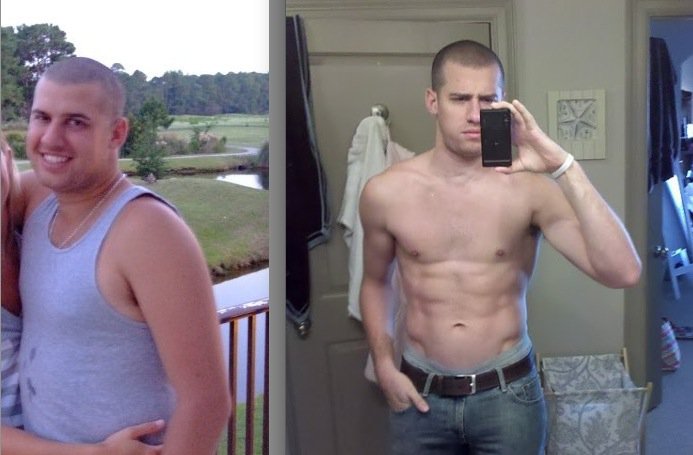
The “get abs” and “target belly fat” industry is booming.
Whatever the product, workout, or service is, they are trying to sell you quick fixes for a flat stomach that will not get you a flat stomach quickly. That is, unless you also make another BIG change, which is what Saint from the NF community focused on to get to the above results (without any ab product, routine, or service), but I’ll get to that shortly!
Here are the things you need to know moving forward:
Everybody has abdominal muscles. Yep, even you! They might be tiny, or weak, but everybody has 6-pack abs. They are just hidden under a layer of fat. Depending on how big you are, your strong abs could be buried under a lot of fat. No judgment, just reality.
Fat does NOT turn into muscle – they are two different things. Like oil and water, fat sits on top of muscle. You could have ridiculously strong abs ready to pop out, but if they are buried under a lot of fat, no amount of exercise will give you a flat stomach or make those abs pop, because it doesn’t address the fat on top of your muscles.
A flat stomach only appears when you have a low enough bodyfat percentage. The reason there are 1,000,000,000 ab workouts on YouTube is because people know there’s BIG money in the ab-industry for people desperate to get a flat stomach! And ab exercises are much easier to market as exciting than “eat better, get strong, move more, for a long long time.”
So, if you are somebody who tortures yourself for 30 minutes a day in the various ab machines or you’re doing 1000 crunches every day, it’s not doing what you think it’s doing. I’m giving you permission to stop cold turkey.
Why? Because…
You CANNOT target or spot-reduce belly fat!

I REPEAT: YOU CANNOT SPOT REDUCE FAT ON YOUR BODY!
This applies to any area you might want to target with exercises, or any product that says it targets that area:
Doing Thighmaster workouts to target the inside of your thighs will not make the fat on your thighs disappear. Instead, it will could make your thigh muscles UNDER the fat stronger. Despite what Carol from Step By Step tells you.
Doing more arm exercises to tone your arms will not make your arms less flabby. It could make the arm muscles UNDER the fat stronger.
Doing 1000s of ab exercises will not shrink your stomach. It could make your ab muscles UNDER the fat stronger.
Now, please feel free to continue doing exercises that target these areas! This can actually help preserve muscle as you fix your nutrition (which is covered below). Just don’t expect the exercises themselves to reduce fat in that area.
Yup, this means all the “secret ab routines” you see about targeting certain abs (Upper abs! Lower abs! Obliques!) mean diddly squat about getting rid of the fat on top of those muscles – those are only necessary when you are at a low bodyfat percentage. Which means you can stop doing 10 different ab exercises to hit the different muscles in your stomach. It’s not a good use of your time!
Next, you’re going to ask me (I promise I’m psychic): “Okay, if targeting areas of my body with certain exercise doesn’t make me lose fat in that area, how DO I lose belly fat then?”
Depending on your age, weight, sex, and genetic makeup, your body will lose fat in a certain order, from certain parts of your body, that you can’t control.
Historically, men tend to carry more fat in their stomachs and butt as they get fatter, and women tend to carry more fat in their thighs, hips, and stomach as they gain fat.
The opposite holds true during weight loss. As you lose weight, your body will lose fat in certain areas in a certain order based on your genetics and how your particular body type chooses to shed body fat.
Cool? Cool.
Yes. That means we need to put a great plan in place to lose ALL fat, knowing that as long as we lose enough of it, we’ll ALSO lose belly fat along the way.
A Deep Dive Into Your Nutrition.
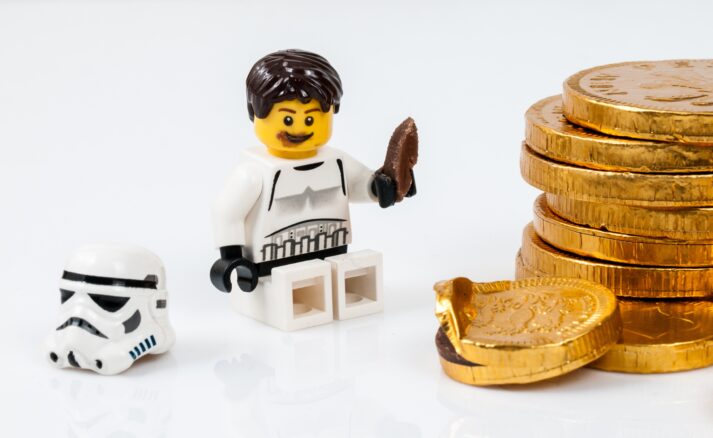
Following the strategies we lay out below and throughout Nerd Fitness WILL get you a flat stomach (if you actually do the work), but it won’t happen overnight, and it won’t be effortless. You’ll need to change your nutritional relationship with food and focus on a few key things:
1) Consume fewer calories than you are currently consuming. In order to do that, you need to know how much you currently eat, you need a plan to eat less, and then track how consistent you are with that plan.
KNOW HOW MUCH YOU’RE EATING: Use an app like MyFitnessPal or DailyPlate to diligently track your calorie intake (I bet you’ll be surprised that you’re eating more than you realized), and then adjust your numbers down from there.
For example, if you want to cut back on beers you drink each week (a GREAT plan for getting a flat stomach) then you first have to record how many drinks you actually have, every day. An actual number. We all know you tell the doctor “a few drinks a week” but that won’t cut it here!
Your plan then should be to reduce that number – by one or one hundred (please don’t drink 100 beers a week). But, nonetheless, a reduction in beers consumed is the key here.
After a week, track your calories again, and compare actual numbers. Did you drink less? A plan is only as good as your ability to follow it. If you didn’t follow through, was the plan too complex? Goals too ambitious? Were you also trying to launch an interstellar satellite your first week of dieting?
We’re looking to cut back on calorie-high, nutrient-poor food first. Candy. Carbs. Sugar. Then move to counting calories, and then maybe onto more advanced/involved tactics like tracking your macronutrients and weighing and measuring food.
If you’re looking for big wins here, ditch the liquid carbs. Soda, gatorade, fruit juice, and alcohol are calorie dense, nutrient poor, and loaded with sugar/empty calories. We’ve had people in our community lose 50+ lbs (20+ kg) simply by cutting out liquid calories from their diet.
2) Consume more vegetables. We’re talking the leafy greens and similar vegetables in this case. No, pizza is not a vegetable. Recommended daily intake is 2 ½ – 3 cups of vegetables a day. Depending on your current intake, this might sound absurd.
I know some people who average zero a day.
If that’s you, it’s okay, no judgment – we all start somewhere. The great part about more vegetables in the diet is it tends to help #1: eating less calories. Vegetables take up stomach space, are low in calories and high in nutrients.
You may be one of those people currently eating zero vegetables – something you don’t need to track to know! Ok, now let’s add some veggies into the day.
What’s that? You HATE veggies? I got you covered there too.
3) Eat better carbs at better times. Now we’re starting to get a bit more complex. When you are eating carbs, aim for starchy carbs – sweet potatoes, rices, squashes and such. Look for carbs that aren’t processed or liquid. The ingredient list should just be that item (e.g., “sweet potato”, not “cultured wheat starch solids, vinegar, soy lecithin”).
When we do have carbs, the body best handles them after a workout. The energy depleted and the hormonal changes that occur after a tough workout is the best environment to introduce carbs.
A note on low carb diets: With low carb diets (I see you Paleo), a lot of junk carbs (sweets, breads, alcohol) are also restricted in the process. This is good, and often leads to weight loss. Carbohydrates also hold water in the body, so we’ll also see water loss (and subsequent weight loss). All of this is exciting and people think “I’m never touching a carb again!”.
However, your brain uses glucose and your muscles use glycogen as fuel sources. We get this glucose and glycogen from carbohydrates, so some carbohydrates are good.
We are NOT going to be talking about extremely-low carb diets – like a Ketogenic diet – here (which produce ketone bodies, which the brain then uses for fuel), as these are more extreme diets and one should seek advice from a doctor or nutritionist first. That’ll be a more advanced topic for another day.
4) Protein, protein, and more protein! The one constant in your nutritional strategy should be protein. Animal sources at every meal. This helps conserve the muscle you have as calories are reduced and you start to lose weight.
Just like vegetables, this can be as simple or as complex as you want it. Maybe you’re just making sure there’s a protein source at each meal (if it was lacking before). Maybe you’re figuring out rough portion sizes. Maybe you’re taking it to the max and actually weighing your food. The point is, you should be including it throughout the day and week.
A note on vegan/vegetarian diets: This is another topic that entire books and articles are written about, and which we won’t dive into here. It is possible to build muscle and lose belly fat on a vegan/vegetarian diet, and certainly you can get to a flat stomach, you just need to be diligent with your calorie tracking and macros. Just like an unhealthy paleo person, you can be an unhealthy vegetarian!
5) Healthy Fats! If you are cutting back calories from junky carbs, restricting your carb intake to after your workouts, and you’re loading up on vegetables, then you might struggle to eat enough calories every day.
This is good, but too few calories can also be detrimental to progress (see below)!
Enter the fats. You’ve already got protein and veggies in the meal, healthy fats will round out a good meal. Avocados, olive oil, mixed nuts and the like. But, but, but! Understand that these healthy fats are calorically dense, so snacking on them all day tends to blow your calorie count way up (see #1)
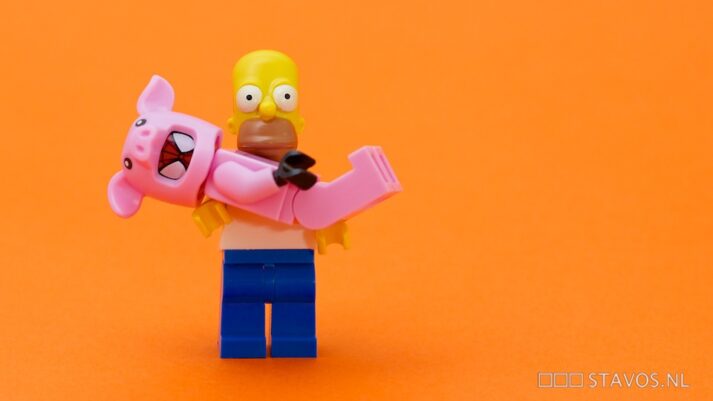
Here at Nerd Fitness, we’re a fan of the idea behind the Paleo Diet, as it covers the list we just outlined above and gives you a simple, if strict, framework to follow. Even if you don’t follow things to the letter, a Paleo-ish diet – and the countless resources that have sprung up for it – are a great starting point for many people.
If you’d like further reading, we recommend the following:
We also have a TON of free, healthy recipes here on Nerd Fitness that you can use to start cooking healthier meals and improving your relationship with food too:
Our recommendation: do not drastically change 100% of your diet right away. Do not go on an “ab blasting diet.” Instead, slowly adjust your food and build the habit of eating healthy. Remember, simple first.
You have a much wider margin for error to start making progress at the beginning when you just want to start losing some weight.
By the time you get down to the teens on your body fat percentage, you need to be WAY more diligent, militant, and restrictive on your nutrition. Remember that it won’t happen overnight, and it won’t happen in “minutes a day” unless you’re spending those minutes eating a flawless diet!
A final warning on your diet: don’t go super low calorie and starve yourself!
There needs to be a reduction in your calorie intake to lose weight and body fat, but many take that and apply the logic: “If some calorie restriction is good, then a lot must be better!!”
Slow down. Restricting your calories too much causes a mess of your hormones and will halt efforts to lose body fat, as well as compromise your health (weakened immune system, malnutrition, turning into Grumplestilskin, etc).
So remember, when it comes to your nutrition:
- Know where you are starting: Take starting photos (front and side). Track your calories for a few days.
- Know what you are doing/looking to accomplish: what my goals are, and why!
- Know how you are going to track/measure progress: decreasing calories, more veggies and protein, etc. BE SPECIFIC!
- Start simple, add complexity as you need to!
Exercise: The other side of a mis-weighted coin
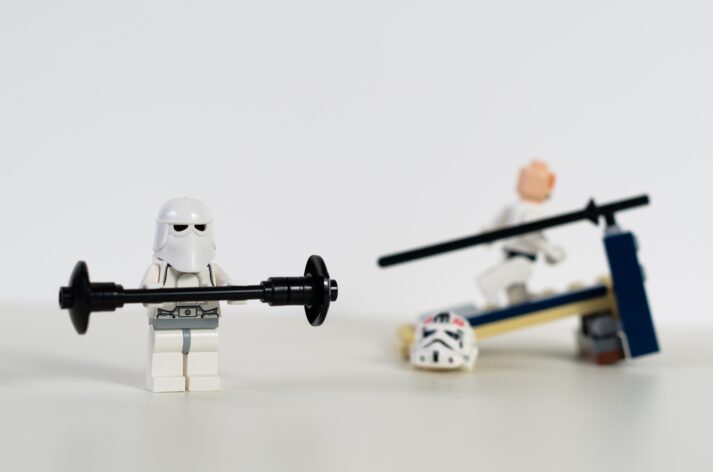
Now, because you’re both smart and curious (and good looking, and modest), you’re putting it all together: “Steve, if I can’t target belly fat, and food is 80-90% of the puzzle, what’s the other 10-20% of the equation?”
Weight loss pills and horse tranquilizers!
KIDDING! Relax!
It’s exercise.
Let’s lay down some ground rules here:
RULE #1: Don’t do another crunch for the rest of eternity. The fat on your belly doesn’t give a flying f&*$ how many crunches you do.
Below are three members of the NF community (myself, Team NF’s Staci, and my friend Saint) all got ‘shredded’ and ‘6-pack abs bro!’ without doing a single crunch:
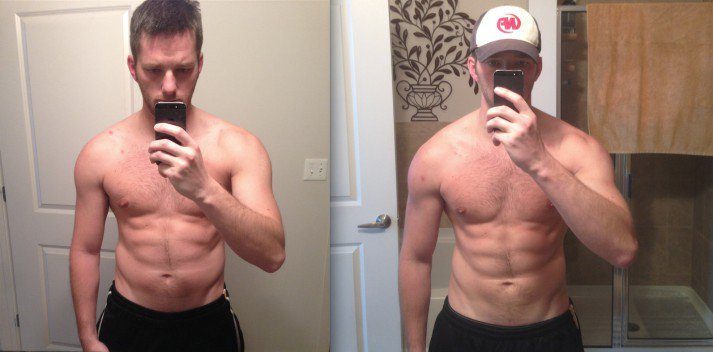
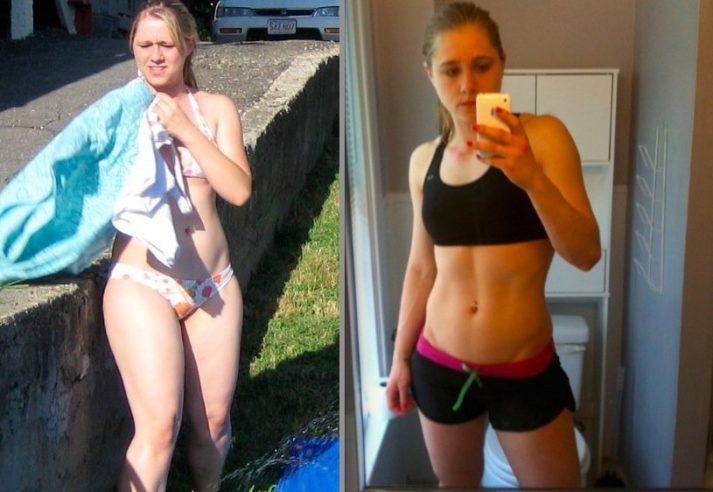

I’m not sharing these stories with you to brag or sell you on a “workout scientists HATE!” or a supplement or ab machine. I’m going to sell you the truth, FO FREE!
The three of us above never did a single crunch or “ab workout.” Instead, we all got stronger and then focused 90% of our effort on the actual important part of the equation: our nutritional strategy. In other words, we ate in a way that decreased our body fat percentage.
Remember: no amount of exercise will give you a flat stomach! You have to eat in a way allows your body to burn more calories on a daily basis than it consumes, and your body fat percentage will start to decrease.
Why you don’t need to do another crunch ever again: Are you sitting down right now? Do a crunch right there. With a crunch we’re training those muscles to be strong in that rounded back position – reinforcing the terrible slouching posture and problems we see from prolonged sitting. Don’t worry, we’ll give you some alternatives below.
Starting today, you are no longer allowed to touch a single ab machine at the gym.
Yes, I hear you when you say “I can feel the burn in my abs when I do ab routines! That means it’s working!” These routines might very well be making your abs stronger.
What I’m telling you is that because targeting your abs will not give you a flat stomach, any time spent in the gym on your abs is time NOT being spent focused on more efficient exercises that will actually you faster results.
Think of it like an “ab opportunity cost”: When you do an ab exercise, your body will burn some calories like any physical activity. However, if doing 15 minutes of crunches burns 100 calories, and doing 15 minutes of certain OTHER exercises burns 500 calories…you’d be a fool to do the crunches, right?“
You’re a busy person (I know it, everybody is), and you only have so much time you can dedicate to fitness. Which means if you ONLY have 30 minutes to work out, you should be focusing those 30 minutes on BIG WIN exercises, not isolating your abs. It’s bad math.
Pick the highest leverage movement and get the hell outta there!
Rule 2: Do big, strong, compound movements: I’m proud of my physique, because I work hard to look like I do. However, my flat stomach isn’t because I focus on it for training. My training is focused on getting stronger, and the abs are a side effect.
When people ask me: “what are the best ab exercises?” my answer confuses them:
Squats. Deadlifts. Lunges. Push-ups. Pull-ups. Dips. Rows. Going for long walks. And eating better.
They then look at me funny and repeat, “no I said ab exercises.” To which I reply with the same thing. Here’s Staci doing her “ab workout” with a 410 lb deadlift:
Obviously, the “ab workout” name is a joke and misnomer, as Staci isn’t focused on her abs. Instead, she’s focused on getting stronger, and the flat stomach is a side-effect:
The compound movements I mention above recruit nearly every muscle in your body, including your abs/core. Because they recruit and require so many muscles, your body will burn a TON more calories and have to rebuild more muscle after you train than if you spent your time doing only ab exercises.
Sure, if you have unlimited time and you are desperate to do ab exercises, you can do those AFTER you do your strength training workout, AFTER you’ve got your nutritional strategy locked in. But only at the end. And I’ll share with you some good core-strengthening exercises in the next section.
However, I would keep my focus on big, compound movements – regardless of your age or sex – do those first and foremost, and get really strong with them. Then, and only then, if I had extra time, I was a masochist, and I also had my nutritional strategy together, I would do ab focused exercises.
Here are some free workout strategies you can follow:
I’m less concerned about what exercise plan you follow, as it’s a much smaller piece of the puzzle when it comes to getting a flat stomach!
“But Steve I STILL want to do ab exercises!”
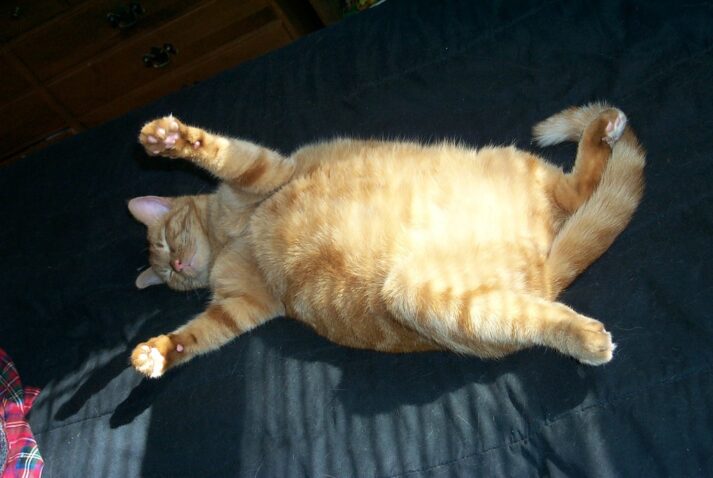
Damn, you really like ab exercises, eh? Alright alright! If they make you feel like you’re doing something, you actually enjoy them, and you feel the burn, go for it!


AS LONG AS YOU START YOUR WORKOUTS WITH BIG COMPOUND MOVEMENTS, then you can ALSO do ab exercises at the end of your routine if you have time. Deal? Deal!
- For starters, STOP doing:
Any ab machine exercise at the gym – these are torture devices and a waste of time.
- Crunches and sit-ups – these are incomplete exercises that depending on your current health could be doing more harm than good.
Good? Good.
You see, the abs and midsection are much better suited to transfer movement (swinging a bat), as opposed to creating movement (short range of motion in a crunch). So let’s first focus on exercises that create STABILITY and NON-MOVEMENT.
Instead, do one of the following exercises at the end of your routine. Go nuts, you crazy animal:
Front planks and side planks – classics for a reason. Help your entire body engage and keep stable.
Ab wheel rollouts – tough, and often abandoned because they are so tough. When planks put you to sleep, step it up with these.
Pallof press – an anti-rotational movement that you can do with bands or cable machine, kneeling or standing. Be sure to work both sides!
Waiter’s Walks / Farmer’s Walks – You know that feeling when you’re carrying something heavy? Yeah, that’s the abs! Grab a single dumbbell and hold it overhead (Waiter’s Walk), or a grab one or two dumbbells by your side and take a walk (Farmer’s Walks).
Hollow body holds – this will help you prepare for things like handstands and improve core strength.
Cardio, cardio, and more cardio?
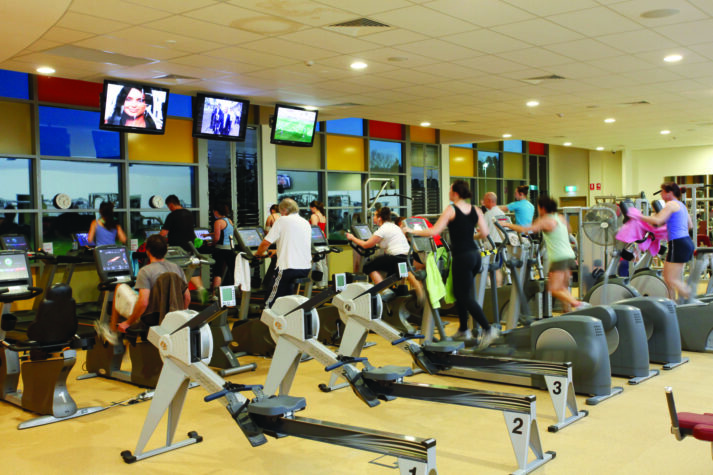
In the quest for a flat stomach, far too many people chain themselves to treadmills or ellipticals, going along for hours at the same slogging pace.
Does it do any good? A little! Is our time better spent doing something else? Absolutely.
First off, as it bears repeating, nutrition is going to be the biggest key to finding those abs. It’s all about getting the most bang for your buck:
- If you are spending an hour on the treadmill, but don’t spend any time on your nutrition, you won’t see any results.
- You are better off doing a half-hour on the treadmill and and then half an hour on improving your nutrition.
- Or, do 30 minutes preparing a healthy meal, knock out some push-ups and squats, and then go play video games.
Now, we’re not discounting aerobic exercises or simple walking. We love walking! It’s great! It’s movement! It may absolutely be the best thing for you when you are just starting out!
But, if you have a choice in cardio, it’s best to prioritize and do interval work. For one, it tends to take less time than traditional aerobic exercise, improves your VO2 max (oxygen usage), and helps improve the body’s hormones to be more responsive to fat loss.
Less time and better results? Sign me up! If you LOVE cardio, like biking or aerobics classes, do them. But only after you’ve fixed your nutrition!
Sleep and Stress: The Last Part

Ok, ok, our math might be a little off (as nerds we’re horrified). Nutrition has the lion’s share of importance in this journey at 80-90%, exercise was sitting at about 10-20%, but if we had to carve out a few percentage points for something else, it would be sleep and stress.
Too little sleep and too much stress wreaks havoc on our body’s hormones and can make it that much more difficult to lose body fat – especially around the midsection.
As you’re getting everything else dialed in, see what else you can do to help this area.
Further reading:
How to Know You’re Getting Closer

Depending on your goals – ranging from “I want to be less doughy” to “I want to be absolutely ripped” – your level of dedication, length of focus, training, nutrition, sleep schedule, and stress level will determine how quickly you can reach your goals or how militant you need to be.
To gage your progress, make sure you are taking photos and measurements at least every month (or every other week). You might not see progress day-to-day, but comparing photos side-by-side after a few weeks can certainly help.
Here’s how to measure your progress.
“What bodyfat percentage will reveal a flat stomach?” We’ve written an entire guide on how to track your bodyfat percentage, and setting your proper expectations there too. If you’re interested in tracking your BF, I would highly recommend you set aside time to read that piece too!
Here are some estimates that you can compare yourself against right now, and use as a guide to know where you need to get to:
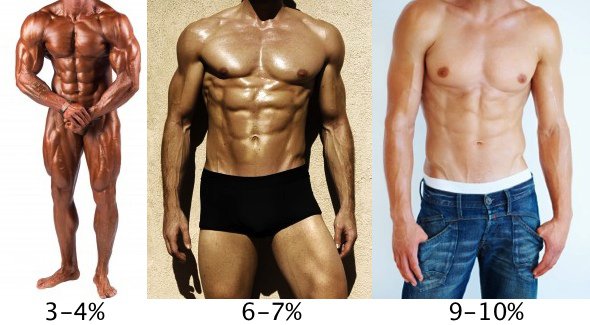
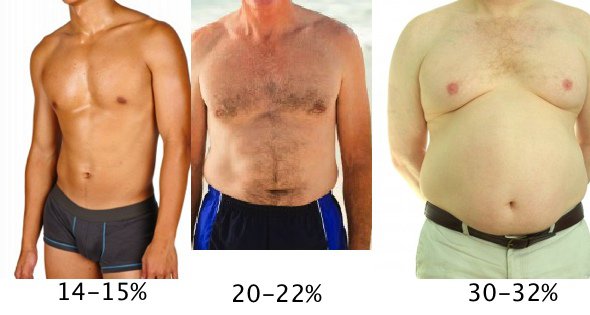
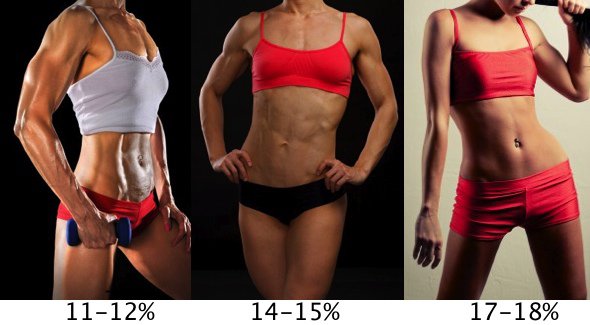
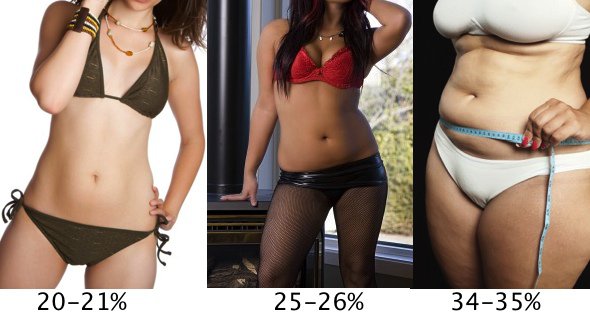
Hope and Action

I want to leave you with one final important thought:
You’re here because you want a flat stomach. That’s awesome! I know feeling more confident physically in your skin can lead to a dramatic improvement in your outward confidence and self-esteem too. I know my life improved as a result of taking care of myself physically, and that physical strength created an inner strength and confidence that carried over to the rest of my life.
HOWEVER…
A flat stomach isn’t a panacea for all of your troubles! Just like money can’t buy you happiness, or confidence, or abs, or a toned stomach. If you’re unhappy and self-loathing now, getting obsessive about a flat stomach won’t make you happy later.
Good luck in your quest for a flat stomach and strong body – just don’t lose yourself along the way. That’s what we’re here for at Nerd Fitness: help you reach your goals in a healthy and permanent way!
So remember, whether it’s nutrition or exercise:
- Know where you are starting: Take photos. Track your calories for a few days.
- Know what you are doing/looking to accomplish: what your goals are, and why you’re doing this!
- Know how you are going to track/measure progress: decreasing calories, more veggies and protein, etc. Be SPECIFIC with your data to get closer to improvement.
- Start simple, add complexity as you need/want
If you are seeing progress: GREAT! Keep doing what you’re doing.
If you are NOT seeing progress after a few weeks: That means you need to tweak things – usually your nutritional strategy. Go back through this article line by line and make sure you are implementing your plan accurately. Ask yourself:
- Is your tracking accurate?
- Are you properly accounting for all the things we listed?
- Do you need to get a little more complex with your tracking?
- Can you recruit a coach or lean on this NF community for more help?
This has been a public service announcement from your favorite (I hope) truth-telling, fit nerd.
Now back to your regularly scheduled advertisements of “secret six-pack ab-blasting belly-fat targeting weird trick that scientists hate!”
Brave? Leave a comment below with all of the crazy ab products you’ve bought or hours spent doing ab workouts. It’s okay, you’re among friends. I used to do abs 6 days a week! Sigh.
Questions? ANYTHING you want to ask about belly fat, abs, routines – leave a comment and we’ll reply. Thanks for reading!
No more crunches!
-Steve
###
photo sources: threefatcats: Where’s the remote Snickers?!, Ochre Jelly: Jaba the Hut lego, wwarby: Tasty Treat, stavos: Spiderpig, lucidtech: New Years Resolutions, UNE Photos: Sport UNE gym, Roehan Rengadurai: Sleeping Beauty, Tripp: Big Fat Cat, Yukari*: fat cat, tiago sousa garcia: The little writer II






















 For now classes are 6pm and 640pm at 2840 Wildwood st in the Boise Cloggers studio.
Book your class NOW!
click this ==>
For now classes are 6pm and 640pm at 2840 Wildwood st in the Boise Cloggers studio.
Book your class NOW!
click this ==>








